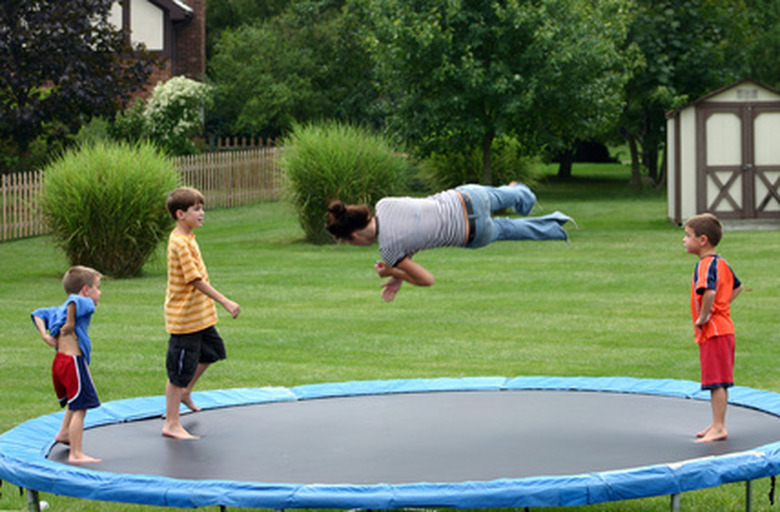Science Projects Using Gymnastics
Gymnastics is a sport that puts an emphasis on several athletic dimensions, including body awareness, balance, coordination and strength. It incorporates a multitude of individual events, such as floor routines, vaulting and pommel horses, balance beam, and the parallel, horizontal and uneven bars, all of which incorporate movements described by physics and the laws of motion. You can learn more about gymnastics and the science behind it by completing a project on the subject.
Physical Characteristics and Front Roll Distances
Physical Characteristics and Front Roll Distances
A front roll, or somersault, is one of the most basic, beginner movements in gymnastics. It involves rounding your back and pushing forward so that your legs come over top of your head, while your back rolls along the ground. According to Super Science Fair Projects, as a science project, you can determine what effects the physical characteristics of people have the on the distances they cover when performing front rolls. Weigh and measure the height of a number of participants, and then have them complete a front roll, starting at a line of tape that you put down on the floor. Run a tape measure from the start line to the back of each participant's feet to calculate distance, and record your measurements in a notepad. Compare your results to determine what effects, if any, height and weight had on front roll distance.
Weight and Trampoline Bounce Height
Weight and Trampoline Bounce Height
Trampoline first became an Olympic gymnastics event in the year 2000. It involves athletes bouncing on a strong sheet of fabric, which a series of metal springs around its perimeter hold taut. According to Science Buddies, as a science project, you can determine whether or not the weight of an object has impact on how high it bounces on a trampoline. Start by setting up a digital video camera so that it focuses on a trampoline and the space above it. For optimal results, hang up a yardstick or other frame of reference nearby. Then, drop a series of objects from a fixed height on to designated areas of the trampoline's surface. Start with light objects, like ping-pong balls and plastic bottles, and then move up to heavier ones, like golf balls and bricks. Review your digital footage frame-by-frame to determine how high each item bounced and whether or not weight made a difference.
Springboard Time and Vault Distance
Springboard Time and Vault Distance
The objective of this project, according to Super Science Fair Projects, is to determine what impact, if any, the amount of time an athlete spends on a springboard has on vaulting distance. Setup a digital video camera and have some participants, with gymnastics experience, complete front handsprings over a vaulting horse by running and bouncing off of a springboard—the more times, the better. Then, analyze your footage frame-by-frame to determine how long each participant stayed on the springboard and how far each participant vaulted, or how far out they landed after each try. Compare your findings to see if there is a correlation between springboard time and vault distance.
Cite This Article
MLA
Devaney, Erik. "Science Projects Using Gymnastics" sciencing.com, https://www.sciencing.com/science-projects-using-gymnastics-6628219/. 24 April 2017.
APA
Devaney, Erik. (2017, April 24). Science Projects Using Gymnastics. sciencing.com. Retrieved from https://www.sciencing.com/science-projects-using-gymnastics-6628219/
Chicago
Devaney, Erik. Science Projects Using Gymnastics last modified August 30, 2022. https://www.sciencing.com/science-projects-using-gymnastics-6628219/
